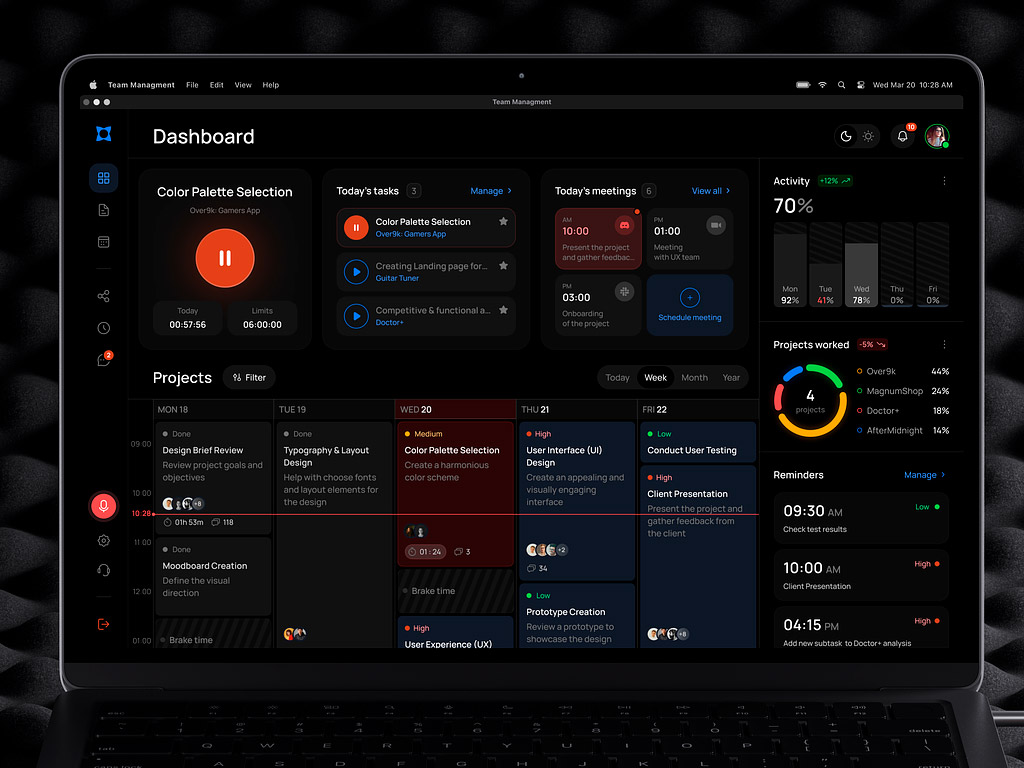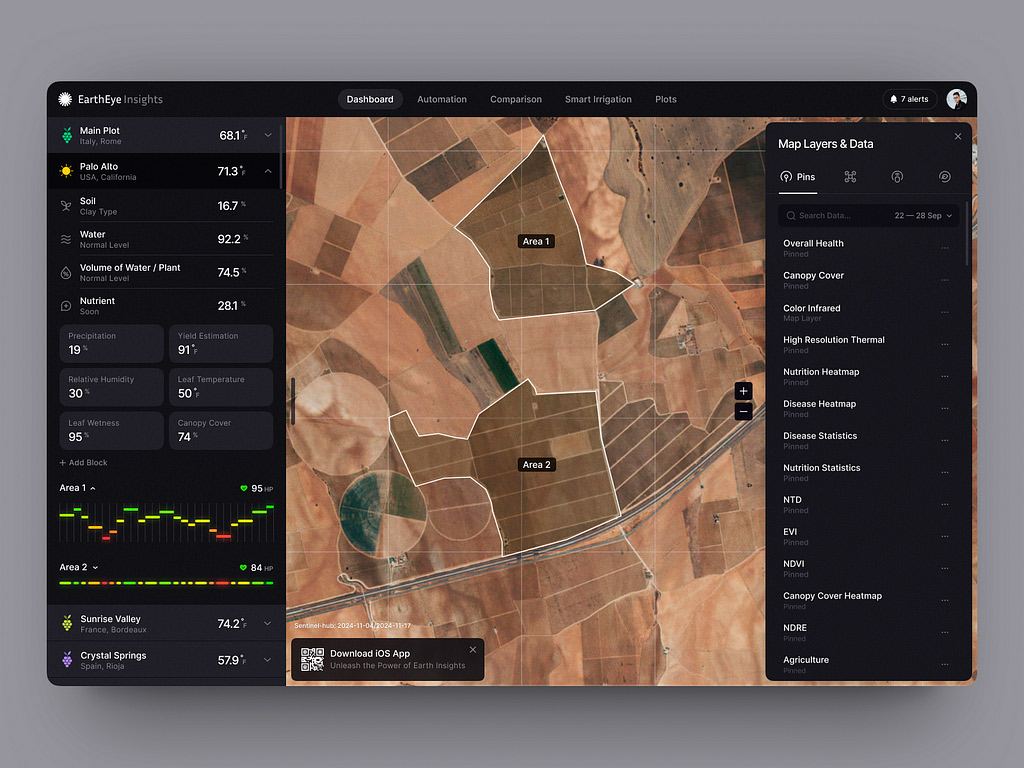The pressure of creating a viable product is immense. You need to prove to the stakeholders that your product is feasible, please the target audience, and simultaneously achieve the business goals. It is similar to juggling with a dozen balls, where one mistake destroys all the magic. How do you ace this task and enter the market successfully? How do you minimize risk and maximize benefits when resources are tight and time is limited?
Contents:
This is where the concept of a proof of concept (PoC) comes into play. It serves as a critical stepping stone in the software development journey, enabling you to test hypotheses, demonstrate functionality, and gauge market interest without heavy investment. The approach provides a safety net to explore potential solutions, gather feedback, and pivot if necessary—all while conserving your valuable resources.
In this article, we will dive deep into the intricacies of PoC for software development. We’ll explore how it can help you mitigate risk, refine your product vision, and ultimately accelerate your path to success. If you’re tired of navigating the murky waters of app development without a clear roadmap, keep reading.
What is a Proof of Concept
It is a way to demonstrate the feasibility and potential of a particular idea or technology. The approach validates that a concept can be applied in a practical, real-world context before moving on to more resource-intensive phases of development. It’s like a try-out before the real competition begins.
Main features
- Defined Objective: The approach has a specific goal, such as verifying the feasibility of a proposed feature, technology stack, or integration with an existing system.
- Limited Scope: It is not meant to be a complete application but a focused implementation that tests key functionalities or technologies.
- Technical Feasibility: It primarily assesses whether the technology can perform as expected within the intended environment.
- Documentation and Evaluation: Outcomes and learnings are documented thoroughly to inform decisions about continuing development.
- Stakeholder Engagement: PoC in software development often involves stakeholders (e.g., product owners, developers, and end-users) to gather feedback and gauge interest.
Difference Between PoC, Prototype, and MVP
In contrast, prototypes focus on design and usability, and MVPs are aimed at market testing of a product with essential features. Each stage serves a unique purpose in the development process, helping to mitigate risks and guide decision-making for future iterations.
Let’s take a closer look at each.
Proof of Concept (PoC):
- Objective: Validate whether an idea or technology can work.
- Focus: Technical feasibility and proof that specific aspects of a concept can be achieved.
- Duration: Short-term, often completed quickly.
- Output: Limited demonstration or mock-up; may not be user-facing.
Prototype:
- Objective: Represent an application to explore design, functionality, and usability.
- Focus: User experience and interface; helps visualize how the final product will work.
- Duration: Typically longer than a PoC but still aims to iterate quickly.
- Output: An interactive model that showcases the product’s design and workflow, often with few functional features.
Minimum Viable Product (MVP):
- Objective: Launch the simplest version of the product with core features to early adopters to gather feedback and validate market demand.
- Focus: Delivering real value to users while being functional enough to capture user data and feedback for improvement.
- Duration: Longer-term development compared to the proof of concept and prototype, as it involves shipping a usable product.
- Output: A working app version that can be deployed to users, albeit with limited features.
Common Challenges
While being a crucial step, PoC for software development still brings in some challenges. Here is what to prepare yourself for:
- Unclear Objectives: Many teams need help with defining the purpose and objectives, leading to confusion and misaligned outcomes.
- Limited Resources: PoCs require dedicated time, budget, and personnel, which can be challenging to allocate alongside other projects.
- Stakeholder Buy-in: Gaining support from stakeholders can be difficult, especially if they have differing expectations or concerns about this stage’s value.
- Scope Creep: It’s common for this approach to expand beyond its initial scope, making it harder to maintain focus and achieve clear results.
- Technical Limitations: Encountering unforeseen technical issues can hinder progress and impact the validity of the PoC’s results.
- Integration Challenges: Demonstrating how the new solution integrates with existing systems can be complex and time-consuming.
- Lack of User Feedback: By involving end-users, the approach may accurately reflect user needs and usability, leading to missed insights.
- Time Constraints: Rushed timelines can lead to inadequate testing and evaluation, ultimately affecting the quality.
- Evaluation Metrics: Defining appropriate metrics for success can be challenging, so the interpretations of the PoC’s outcomes can be misleading.

Team Management Calendar UI Dashboard by Shakuro
When to Choose PoC for Software Development
Usually, it is applied to mitigate risks early in the development lifecycle. The approach helps in making informed decisions, particularly when there are doubts about the technical feasibility, integration challenges, or performance requirements.
Here are some situations when you should consider creating a proof of concept:
- Exploring New Technologies: When considering the adoption of new tools, frameworks, or technologies that the team has little or no experience with, you can assess their feasibility and fit for the project.
- Validating an Idea or Concept: If you have a novel idea or feature that hasn’t been implemented before, you can demonstrate that it’s technically feasible and outline how it might work in practice.
- Assessing Integration Capabilities: When planning to integrate with external systems, APIs, or third-party services, the approach can highlight potential integration challenges and validate that the desired workflows can be achieved.
- Testing Performance: If performance is critical to your application (e.g., high-traffic scenarios or complex algorithms), a PoC in software can help establish whether the proposed solution can meet the required performance metrics.
- Mitigating Risks: When embarking on a project with significant uncertainties, creating a proof of concept can minimize risks by answering key questions early in the development process and allowing for informed decision-making.
- Gaining Stakeholder Buy-In: If you need support from stakeholders, investors, or management by providing tangible evidence that an idea is viable and worth pursuing.
- Understanding User Needs: In cases where user requirements are unclear, you can facilitate discussions with users or stakeholders to refine needs and expectations based on real-world implementations.
- Budget and Resource Evaluation: If you’re unsure about the resources (time, talent, technology) needed for production, you can provide insights into the requirements and help develop a more accurate budget.
- Prototyping Complex Features: For features that are likely to be complex or hard to build, you can assist in identifying potential challenges and guide the development of a clearer plan.
How to Develop an Effective Proof of Concept
Here are the steps to follow if you decide to opt for this approach:
Step 1: Define Objectives and Scope
Clearly outline what you intend to prove or validate (e.g., technical feasibility, user experience, integration capabilities) and what aspects you will focus on. Then define specific, measurable outcomes you want to achieve: performance benchmarks, user feedback, or something else.
Step 2: Gather Requirements
Collaborate with stakeholders and potential users to gather insights on functional and non-functional requirements. Identify necessary technologies, platforms, and tools that align with the objectives.
Step 3: Plan the PoC for Software Development
Outline a realistic timeframe for the development and testing phases, including key milestones. Then determine the team members, essential tools, and must-have technologies.
Step 4: Design the PoC
Start with developing a high-level architecture that outlines how different components will interact. If applicable, create wireframes or mockups for the user interface to visualize the experience. Map out how data will be collected, processed, and presented.
Step 5: Development
Build the proof of concept focusing on core functionalities and avoiding over-engineering. Use an iterative process for flexibility and adjustments based on feedback and testing. Document the major details and code for future reference and to facilitate knowledge transfer.
Step 6: Testing and Validation
Perform functional, performance, and usability testing to check whether the PoC meets its objectives. Then engage stakeholders and potential users, gather their feedback, and observe them interacting with the concept to identify pain points and areas for improvement.
Step 7: Analyze Results
Compare the results from testing against the success criteria. Document insights gained from the PoC process, including what worked well and what didn’t, to inform future phases of development.
Step 8: Present Findings
Create a clear and concise presentation summarizing objectives, findings, user feedback, and recommendations. Share your findings with stakeholders, highlighting how the PoC supports decision-making for the next steps.
Step 9: Determine Next Steps
Based on the outcome, decide whether to proceed to full-scale development, revisit the concept, or pivot to a different solution. If the decision is to move forward, outline the next steps for transitioning to a production-ready version, keeping in mind adjustments based on feedback.

Security Web App by Conceptzilla
Best Practices & Tools
Creating a PoC for software development requires a well-planned approach and the right set of tools to ensure its success.
Keep it Simple
Focus on the core functionalities that need validation and avoid feature creep. Develop a minimal version that effectively addresses the primary goal.
Plan for Scalability
While keeping it simple, consider how the PoC could scale if successful, and avoid technology or architecture that could limit future growth.
Involve Stakeholders Early
Engage with stakeholders and users early to gather valuable insights. Communicate with all parties involved to align objectives and expectations.
Proof of Concept Documentation
Keep track of the process, decisions, and feedback to facilitate understanding and knowledge transfer. Make sure the documentation is clear, concise, and accessible to all stakeholders.
Iterative Development
Take advantage of Agile practices to develop iteratively, enabling flexibility and timely adjustments based on feedback. Regularly test and validate each iteration to meet the outlined objectives.
Choose the Right Technology Stack
Opt for technologies that align with your existing stack and meet the project requirements. Stick to lightweight, scalable, and easy-to-integrate solutions.
Real-Life Proof of Concept Examples
Here are several real-life examples of PoCs that demonstrate diverse applications and their importance in the project lifecycle. They illustrate how diverse industries utilize the approach to test the feasibility of their concepts, gather user feedback, and validate their business models before full-scale deployment. Each scenario underscores the importance of iterative testing, user involvement, and data-driven decisions in building successful products and services.
Tesla’s Autonomous Driving
Tesla conducted multiple PoCs for their autopilot feature to showcase the viability of self-driving technology. The company equipped early models with a combination of cameras, radar, and ultrasonic sensors. The proof of concept involved extensive data collection from real-world driving scenarios, which helped refine algorithms and validate the idea of semi-autonomous vehicles.
Airbnb’s Initial Offering
The founders of Airbnb started with a basic website that allowed people to rent out air mattresses in their apartments during a conference. This simple website served as a PoC to test demand for short-term rentals. The success of this initial platform helped validate the concept before it expanded to a full-fledged service.
Slack’s Internal Tool
Slack began as a communication tool for a gaming company called Tiny Speck, created to improve internal team communication. The founders used the tool internally as a PoC while developing their game. After realizing the demand and effectiveness of the communication features, they pivoted their focus entirely to Slack, which became a widely used collaboration tool.
Google Cardboard
It is a low-cost VR platform that serves as a PoC for the potential of VR technology. By providing a simple cardboard viewer and a few basic apps, Google was able to check interest in VR and gather feedback that informed further innovations in virtual experiences.
Spotify
Before launching its music streaming platform, the company developed a PoC to test streaming technology and user habits. They rolled out a limited beta version in certain regions to understand user expectations and refine user experience, eventually leading to the successful global launch of the platform.
Amazon Go
Amazon developed a proof of concept for a cashier-less shopping experience through Amazon Go stores. The company tested the combination of computer vision, sensor fusion, and deep learning in a physical retail environment. This way, it validated the concept of customers shopping without traditional checkout lines, eventually rolling it out to multiple locations.

Terraview Dashboard Design Concept by Shakuro
Conclusion
Now you know about PoC’s meaning in business. It is an invaluable tool in the software development lifecycle, bridging the gap between initial ideation and full-fledged implementation. By validating concepts early on, you minimize risks, save resources, and gather critical feedback from stakeholders and users. This iterative approach fosters innovation and enhances team collaboration. It serves as the foundation for successful, sustainable solutions that can adapt and thrive in an ever-changing landscape.
Do you need a team to implement your ideas into reality? Contact us and let’s work together on your next project.

